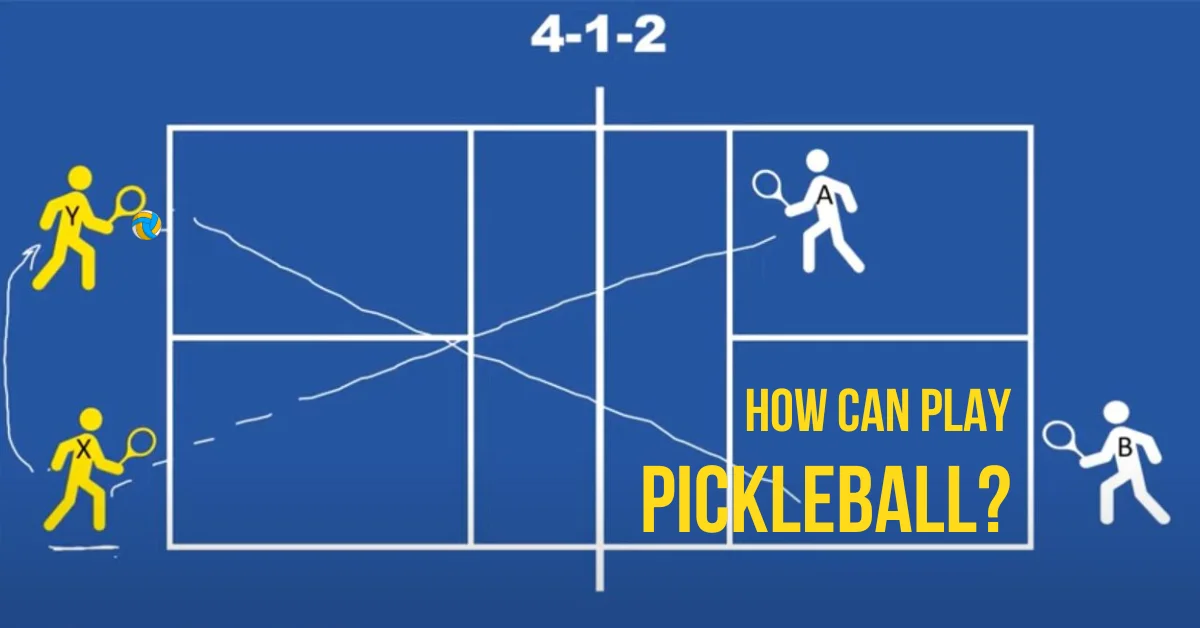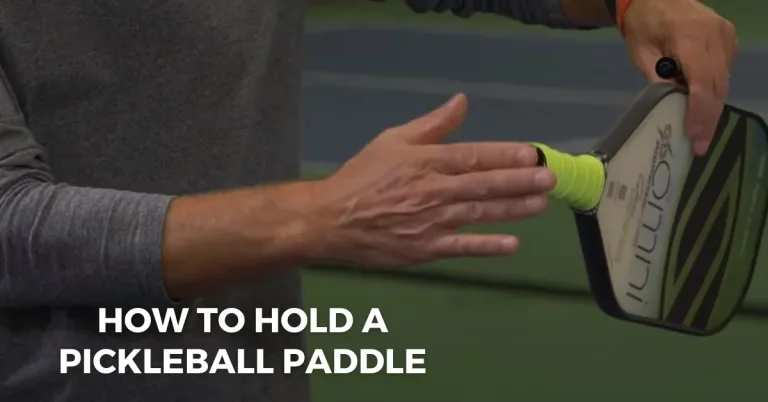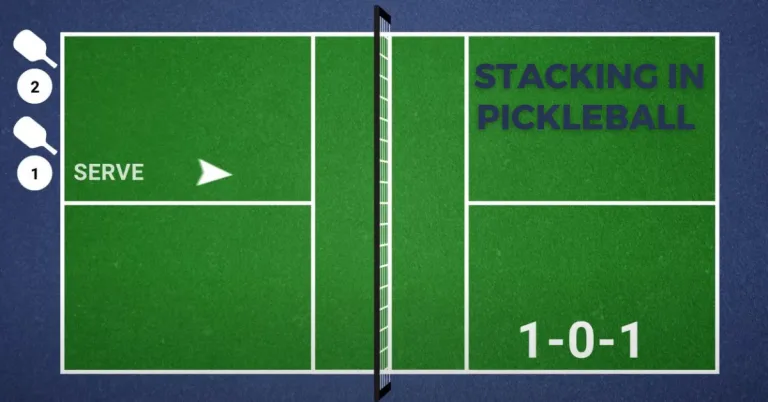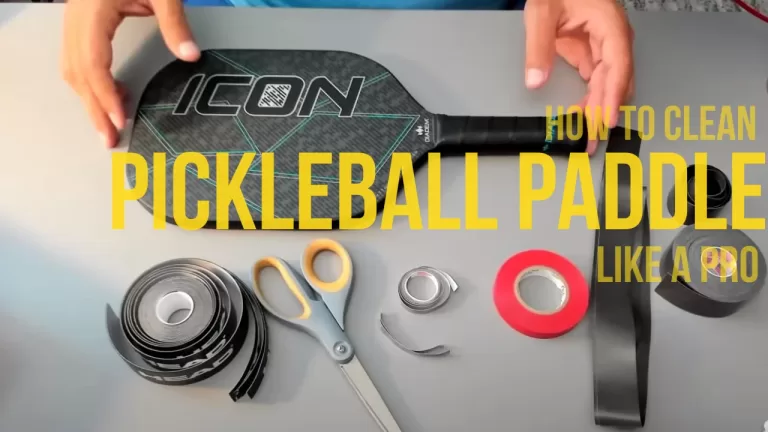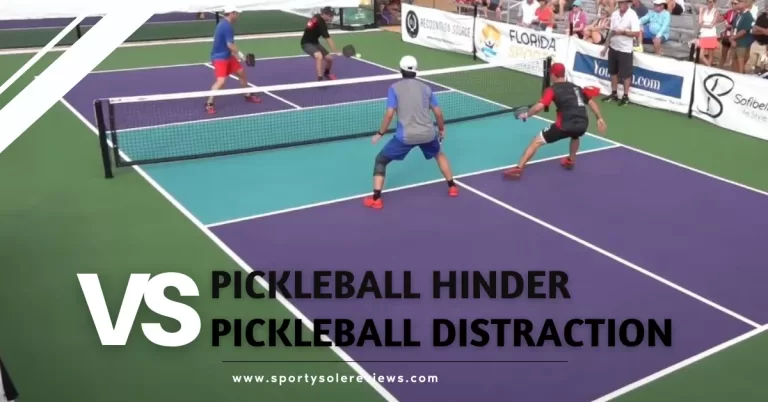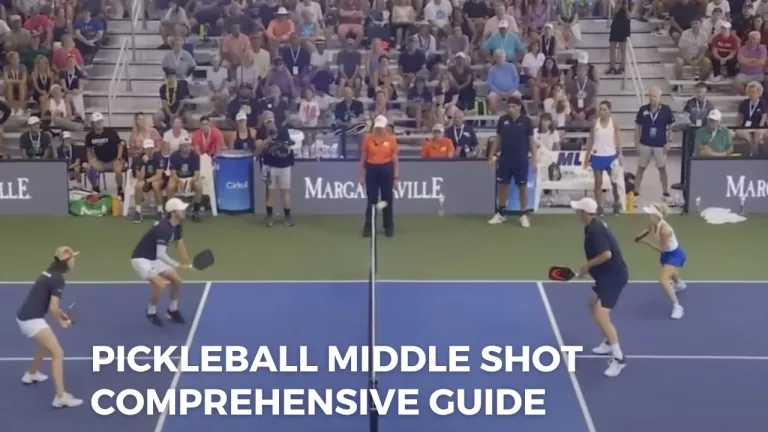A Quick Start Guide to Get You in the Pickleball Game
Pickleball enthusiasts! Are you ready to dive into the wonderful world of pickleball? Whether you’re just starting or consider yourself a seasoned player, In this post I am here to guide you on your pickleball journey. I will cover everything from the basics of the game to essential techniques and strategies, along with different variations and game formats. So grab your paddle, and lace up your shoes.
Pickleball Variations and Game Formats
Pickleball can be played in various formats, each offering a unique experience. Here are three common variations:
- Singles: In singles pickleball, it’s a one-on-one match, with each player covering the entire court individually. Singles play requires agility, quick reflexes, and strategic shot placement to outmaneuver your opponent.
- Doubles: Doubles pickleball is played with two players on each team, making it a more social and collaborative game. Doubles play allows for teamwork, communication, and coordinated movements to dominate the court. It’s important to have good chemistry with your partner and develop a strategy that maximizes your strengths as a team.
- Mixed Doubles: Mixed doubles combines both genders on each team, with one male and one female player. This format adds an extra layer of strategy and coordination, as players must account for the different playing styles and strengths of their partners.
Necessary Equipment for Playing Pickleball guide
To play pickleball, you’ll need three essential pieces of equipment: a paddle, a ball, and a court.
- Paddle: The pickleball paddle is similar to a large ping pong paddle, but slightly larger and made of different materials. It’s typically made of lightweight materials like graphite, fiberglass, or composite. The paddle’s surface has small holes, allowing for better control and maneuverability. When choosing a paddle, consider factors like weight, grip, and shape to find the one that suits your playing style.
- Ball: Pickleballs are designed with unique specifications to match the sport’s characteristics. They are made of durable plastic and have smaller holes compared to a traditional wiffle ball. These holes help reduce wind resistance while maintaining a good bounce. The color of the ball can vary between yellow and white, with yellow being the most commonly used.
- Court: A pickleball serving court has specific dimensions and markings. The court is rectangular, measuring 20 feet wide and 44 feet long for doubles play. For singles play, the width remains the same, but the length is shortened to 20 feet. The court is divided into two equal halves by a net, which hangs at a height of 34 inches at the center. The court’s surface can be made of various materials, such as concrete, asphalt, or even indoor wood or synthetic surfaces.
Dimensions and Layout of a Pickleball Court
The layout and markings on a pickleball court are crucial to ensure fair play and adherence to the rules.
- Baseline: The baseline runs parallel to the net and marks the outer boundary of the court.
- Sidelines: The sidelines extend from the baselines and define the width of the court.
- Non-Volley Zone: Also known as the “kitchen,” this is a seven-foot area on each side of the net. Players are not allowed to step into this zone and hit the ball in the air. However, they can enter after the ball bounces or when they are outside the non-volley zone.
- Service Areas: These are two boxes located on opposite sides of the net, measuring 10 feet deep and 15 feet wide. The server must stand behind the baseline and hit the serve diagonally into the opponent’s service area.
Basic Rules of Pickleball
Pickleball follows a set of straightforward rules that make it easy for beginners to understand and enjoy the game. Here are the basic rules you need to know:
- Serving: The server must stand behind the baseline and hit the ball diagonally into the opponent’s service area. The serve must clear the non-volley zone (kitchen) and land within the opposite diagonal court. Both players on a team get a chance to serve before the serve moves to the opponents.
- Scoring: Pickleball uses a rally scoring system, meaning both serving and receiving teams can score points. A point is awarded if the opposing team fails to return the ball or commits a fault. The first team to reach 11 points (with a lead of at least two points) wins the game. In official tournament play, the winning score is typically higher, often 15 or 21 points.
- Gameplay: After the serve, the ball must bounce once on each side before players can hit it in the air (known as the “double bounce rule”). Once the ball has double-bounced, players can either volley it (hit it in the air without letting it bounce) or play it off the bounce. The ball must always stay within the boundaries of the court.
Common Fouls and Violations
Guide to playing pickleball, it’s important to be aware of common fouls and violations to ensure fair play. Here are a few violations to watch out for:
- Foot Fault: The server must keep both feet behind the baseline when serving. Stepping on or beyond the baseline before making contact with the ball results in a foot fault.
- Non-Volley Zone Violation: Players are not allowed to volley the ball (hit it in the air without letting it bounce) while standing inside the non-volley zone. Stepping into the non-volley zone and hitting the ball in the air is considered a fault.
- Out-of-Bounds: If the ball lands outside the court boundaries, it is considered out-of-bounds. A ball hitting any part of the boundary lines is considered in.
Pickleball Techniques and Strategies
Mastering certain techniques in pickleball can greatly enhance your gameplay. Here are three essential techniques to focus on:
- Serve: A well-executed serve sets the tone for the point. Aim to hit the ball low over the net with enough speed and spin to make it challenging for your opponent to return. Experiment with different types of serves, such as the deep serve, short serve, or a serve that forces your opponent into the non-volley zone.
- Dink Shot: The dink shot is a soft, controlled shot that lands in the opponent’s non-volley zone. It requires finesse and touch rather than power. Use a compact swing and aim to keep the ball low and just over the net. The dink shot can be a strategic way to force your opponent into a difficult position and set up a winning shot.
- Third Shot Drop: The third shot drop is crucial for maintaining control of the game. After the opponent’s return, hit a soft, arcing shot that lands in the opponent’s non-volley zone. This shot allows you to regain your position at the net while putting pressure on your opponents to hit an accurate return.
Positioning, Shot Selection, and Teamwork Strategies
Apart from mastering specific techniques, understanding positioning, shot selection, and teamwork strategies can give you a competitive edge. Consider the following tips:
- Positioning: Maintain proper court positioning by staying close to the net and being ready to react quickly to your opponent’s shots. By being at the net, you can put pressure on your opponents and create better angles for your shots.
- Shot Selection: Choose your shots wisely based on the situation. Use power shots to drive the ball past your opponents or hit a lob to push them back. Mix in dink shots to keep your opponents off balance and force errors. Adapt your shot selection based on your opponent’s strengths and weaknesses.
- Teamwork: Communication and coordination with your partner are vital in doubles play. Work together to cover the court efficiently, anticipate each other’s movements, and communicate about shot selection and positioning. A well-coordinated team can effectively exploit weaknesses in the opponents’ game.
Different Game Formats
Pickleball can be enjoyed in a variety of game formats, catering to different skill levels and preferences. Here are a few popular game formats:
- Recreational Play: Recreational play is the most casual and common form of pickleball. It is played for fun and exercise among friends, family, or at community centers. Recreational play often follows a more relaxed set of rules, allowing players of all skill levels to participate and enjoy the game.
- Tournaments: Pickleball tournaments are competitive events where players compete against others in their skill level. Tournaments offer a chance to showcase skills, compete for prizes, and challenge oneself against top players. These events follow official rules and regulations, providing a more structured and intense playing environment.
- League Play: Pickleball leagues provide a regular schedule of matches against different opponents, usually played over a season. Leagues offer a mix of competitive play and social interaction, allowing players to improve their skills, build camaraderie, and compete against others in a friendly and organized setting.
Now that you have a solid understanding of how to play pickleball, it’s time to hit the court and put your skills into action. Remember these key takeaways:
- Pickleball can be played in different variations, including singles, doubles, and mixed doubles.
- Game formats range from casual recreational play to competitive tournaments and league play.
- Practice good sportsmanship, communication, and teamwork.
- Adapt your strategy based on the variation and game format you’re playing.
- Enjoy the game, have fun, and make lasting memories on the pickleball court.
So, grab your friends, find a local pickleball court, and get ready to experience the thrill of this fantastic sport. Happy pickleball playing!
What is the ideal pickleball paddle weight for beginners?
For beginners, it is recommended to choose a pickleball paddle with a weight between 7.5 to 8.5 ounces. This weight range provides a good balance of control and power.
Can I use a tennis racket to play pickleball?
No, pickleball requires a specific paddle designed for the game. Tennis rackets have different dimensions and weight distribution, which can affect gameplay and may not comply with pickleball regulations.
How do I determine the correct grip size for my pickleball paddle?
To find the right grip size, measure the distance from the base of your ring finger to the tip of your middle finger. This measurement will help determine your ideal grip size, such as 4 inches, 4.25 inches, or 4.5 inches.
What is the optimal pickleball court size?
A standard pickleball court measures 20 feet wide and 44 feet long for doubles play. However, if you only have space for a half court, it can be divided into 10 feet wide and 22 feet long for singles play.
Can pickleball be played on any surface?
While pickleball can be played on various surfaces, the ideal court surface is a smooth, level, and non-slip material like asphalt or concrete. Indoor courts with wooden or synthetic surfaces are also commonly used.

